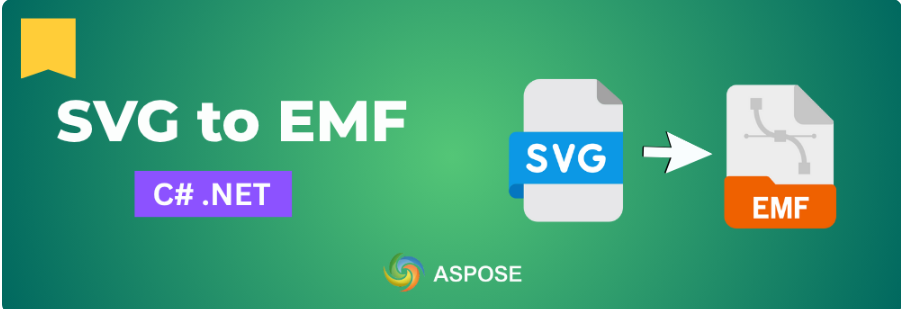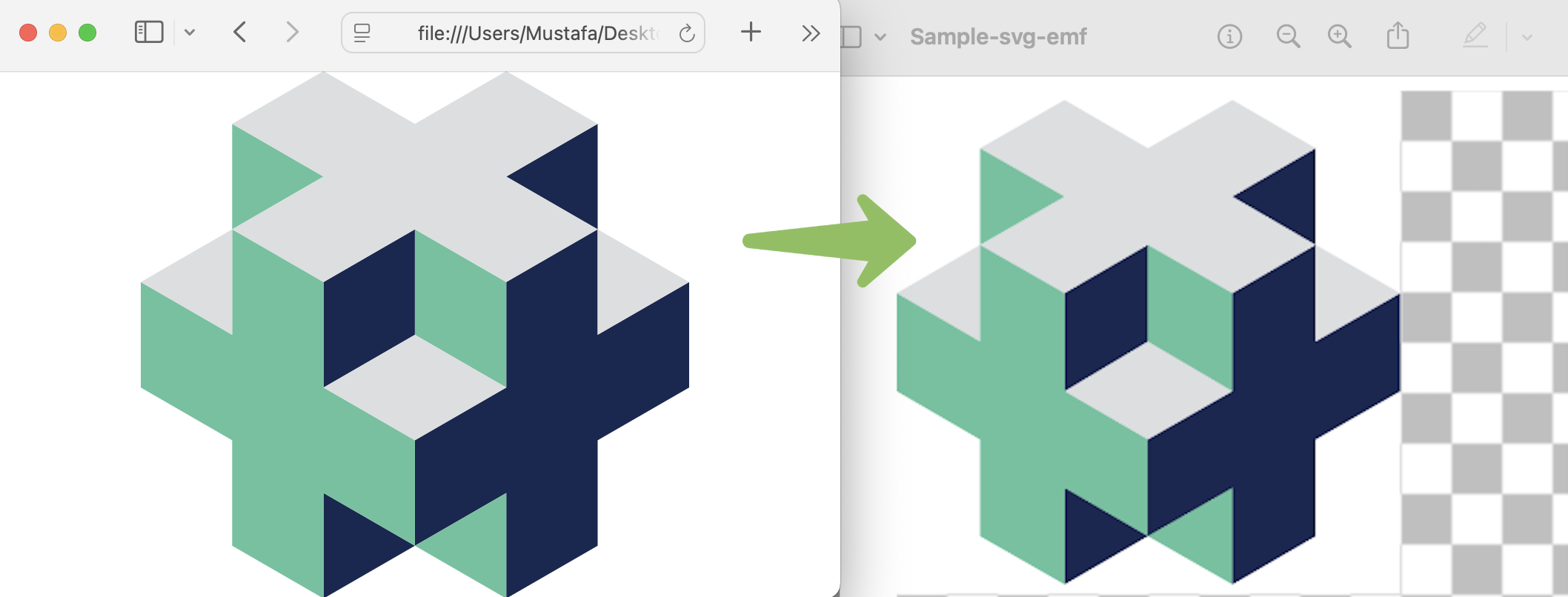
++Aspose.Imaging++ for .NET是一款深受 .NET 开发人员喜爱的图像处理 SDK,因为它灵活且易于开发人员使用。EMF 图像文件格式提供出色的打印质量和可扩展性。此外,这种图像文件格式还节省存储空间。++Aspose.Imaging for .NET 能够++ 使 SVG 到 EMF 的转换变得简单且经济实惠。本教程将演示如何借助Aspose.Imaging for .NET在 C# 中无缝地将SVG转换为EMF。请确保您已在计算机上安装 .NET,以便可以立即实现该功能。
图像处理 SDK - 安装
我们将安装Aspose.Imaging for .NET。请访问**++此++** ++链接++ ++下载++。
Install-Package Aspose.Imaging使用 C# 编程将 SVG 转换为 EMF
您可以按照以下步骤开发 SVG 到 EMF 转换器:
- 循环遍历文件数组。
- 通过调用Image.Load(inputFileName)方法加载源 SVG 文件。
- 将 SVG光栅化选项设置为与原始图像相同的页面大小。
- 初始化 EMF选项并分配 SVG 光栅化设置以进行矢量渲染。
- Save方法将把生成的 EMF 文件保存到磁盘上。
以下代码示例展示了如何以编程方式在 C# 中将 SVG 转换为 EMF:
using Aspose.Imaging;
using Aspose.Imaging.ImageOptions;
namespace CSharp.ModifyingAndConvertingImages.CDR
{
class CdrToPngExample
{
static void Main()
{
// The path to the documents directory.
string dataDir = "files";
string[] testFiles = new string[] { "Sample.svg" };
License lic = new License();
lic.SetLicense(dataDir+"License.lic");
// Loop through the files array.
foreach (string fileName in testFiles)
{
string inputFileName = Path.Combine(dataDir, fileName);
string outputFileName = Path.Combine(dataDir, fileName + ".emf");
// Load the source SVG file by calling the Image.Load(inputFileName) method.
using (Image image = Image.Load(inputFileName))
{
// Set SVG rasterization options with the same page size as the original image.
VectorRasterizationOptions vectorRasterizationOptions = new SvgRasterizationOptions { PageSize = image.Size };
// Initialize EMF options and assign the SVG rasterization settings for vector rendering.
EmfOptions emfOptions = new EmfOptions
{
VectorRasterizationOptions = vectorRasterizationOptions
};
// The Save method will save the resultant EMF file on the disk.
image.Save(
outputFileName,
emfOptions
);
}
}
}
}
}输出:

总结
我们探索了一种可靠的方法,可以在 C# 中以编程方式将 SVG 转换为 EMF。++Aspose.Imaging++ **++for .NET++**是 .NET 开发人员实现自动化转换的优选方案。此外,这款图像处理 SDK 赋予程序员完全控制权,使他们能够根据自身需求扩展功能。这篇博文介绍了其基本功能。